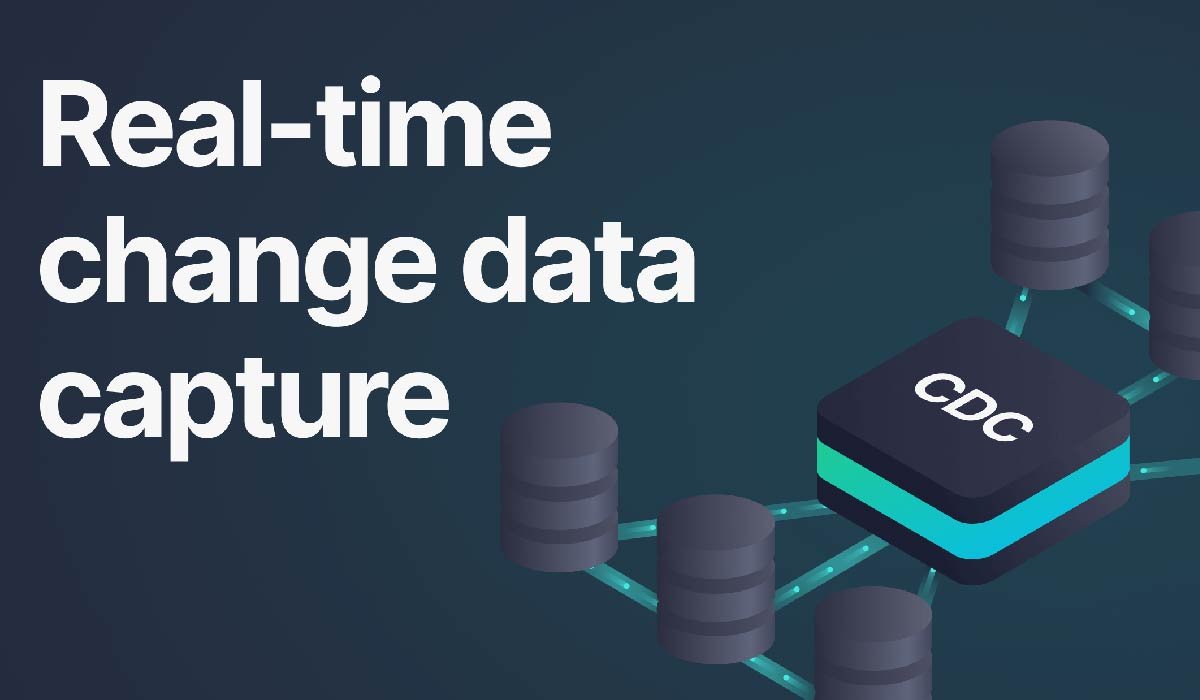Tech
A Deep Dive into MongoDB CDC: How It Enables Real-Time Data Replication

As businesses become increasingly data-driven, the need for real-time data processing and replication is more important than ever. One of the most powerful tools in this space is Change Data Capture (CDC), a technique that tracks and replicates database changes in real-time.
By automating this process, businesses can ensure that their data pipelines are efficient and scalable, without the need for time-consuming manual updates. This capability is particularly valuable for industries requiring up-to-the-minute analytics, such as e-commerce, finance, and healthcare.
This article will explore MongoDB CDC, its working mechanism, and how it enables real-time data replication.
What is CDC?
Change Data Capture (CDC) is a data integration technique used to track and capture changes made to a database in real-time. It identifies and captures insertions, updates, and deletions made to the data in the source database and propagates those changes to target systems. CDC allows organizations to keep their data systems synchronized without having to perform time-consuming full data dumps.
Use Cases of CDC
- Real-Time Analytics: CDC enables real-time reporting and dashboards, ensuring that decision-makers always have access to the most current data.
- Data Replication: Keeping databases, data lakes, or data warehouses synchronized with source systems ensures consistency across all platforms.
- Disaster Recovery: CDC allows for continuous backups and redundancy in data systems, improving data recovery efforts in case of system failures.
Next, let’s explore MongoDB, a widely-used database that can use CDC for enhanced data replication.
What is MongoDB?
MongoDB is a popular NoSQL database that uses a document-oriented data model to store information. Unlike traditional relational databases, MongoDB stores data in flexible, JSON-like documents, which makes it ideal for handling large volumes of unstructured and semi-structured data.
MongoDB’s flexible schema allows developers to store complex data structures while still providing the ability to perform complex queries and aggregations. It is widely used by companies in industries like e-commerce, healthcare, finance, and more.
Use Cases of MongoDB
- Content Management Systems: MongoDB is widely used in managing and storing large volumes of content due to its ability to handle unstructured data.
- Mobile Applications: It is well-suited for mobile app backends, where data can change frequently, and quick scaling is needed.
- IoT Data Management: With its high scalability, MongoDB is ideal for storing and processing the massive amount of data generated by IoT devices.
Understanding Change Events in MongoDB
In MongoDB, change events capture every document modification, such as inserts, updates, or deletions. These events are key to real-time replication, as they allow downstream systems to replicate only the necessary changes. MongoDB’s Change Streams feature provides a real-time feed of these events using the oplog (operation log) to track changes.
Each change event includes metadata like the operation type, affected document, timestamps, and identifiers. MongoDB CDC setups use these change events to ensure efficient data replication, eliminating the need for full refreshes.
Now that we understand MongoDB, let’s examine how CDC works specifically within this database.
How Does MongoDB CDC Work?
MongoDB CDC works by utilizing its Change Streams feature to capture changes made to data in real-time. The Change Streams API provides a continuous feed of change events from MongoDB collections or databases. These events are captured and can be sent to external systems for processing and replication.
Here’s a breakdown of how MongoDB CDC works:
- Change Stream Creation: A change stream is created by opening a connection to the MongoDB database and specifying the collection or database to watch for changes.
- Capture Events: MongoDB captures insertions, updates, and deletions as change events in the watch stream.
- Event Processing: Once the change event is captured, it can be processed in real time. The data can be transformed, enriched, or aggregated depending on the needs of the downstream systems.
- Replicate Changes: The captured changes are replicated to other systems, such as a data warehouse or Elasticsearch, enabling real-time analytics and reporting.
This entire process ensures that only incremental changes are replicated, reducing the load on both source and target systems while maintaining consistency between them.
Next, let’s look at the benefits MongoDB CDC brings to your data replication needs.
Benefits of MongoDB CDC
MongoDB Change Data Capture (CDC) offers several advantages for businesses looking to optimize their data replication and real-time analytics. Below are five key benefits that MongoDB CDC brings to the table.
-
Enables Real-Time Data Replication
MongoDB CDC allows for real-time replication of data changes, ensuring that any updates, inserts, or deletions in the database are instantly captured and propagated to other systems. This leads to more accurate and up-to-date data across all platforms, enabling businesses to make decisions based on the latest information without delays.
-
Improves Data Accuracy
By continuously tracking changes, MongoDB CDC ensures data remains synchronized across systems, minimizing discrepancies. This leads to more accurate analytics and reporting.
-
Reduces Data Latency
Unlike traditional batch processing, MongoDB CDC offers a continuous data stream, reducing delays in reporting and analytics. This enables businesses to operate with real-time data.
-
Scalable and Flexible Data Integration
MongoDB CDC simplifies the integration of data systems, allowing connectivity across different platforms and easy scalability for growing businesses. It supports various systems and data lakes.
-
Supports Data-Driven Applications
MongoDB CDC ensures real-time data for applications like e-commerce, finance, and healthcare. It keeps these platforms updated with the latest data, improving performance and decision-making.
Now, let’s explore how you can implement an effective CDC pipeline using MongoDB and Hevo Data to centralize your data workflows.
How to Implement the CDC Pipeline Using MongoDB and Hevo Data
With the following guide, you can learn how to efficiently set up a CDC pipeline with MongoDB and Hevo Data.
Prerequisites
To get started, you’ll need the following:
- An active MongoDB database with the necessary collections or data to track.
- A Hevo Data account for data integration and replication.
- Basic knowledge of MongoDB Change Streams and how to set them up in your database environment.
- Access to your destination system (e.g., Data Warehouse, Elasticsearch, etc.) where the replicated data will reside.
Steps to Implement MongoDB CDC Pipeline
- Set Up MongoDB Change Streams: The first step in implementing a MongoDB CDC pipeline is setting up the Change Streams API. You’ll need to create a change stream on the desired MongoDB collection to monitor for changes in real-time.
- Configure Hevo Data Source: Once the change stream is set up, configure Hevo Data to connect to MongoDB. Hevo provides connectors that can help automatically extract change data from MongoDB and load it into your target systems.
- Transform Data (Optional): If needed, you can use Hevo’s data transformation tools to clean and enrich the change data before replicating it to the destination system.
- Set Up Real-Time Data Replication: With the change stream feeding data to Hevo, you can configure Hevo to automatically replicate the changes to your target system in real-time.
- Monitor and Optimize: Once the CDC pipeline is up and running, you can monitor the system for any potential performance issues or latency. Hevo’s built-in monitoring tools can help track the health of your data pipeline.
With this, you’re ready to start setting up your MongoDB CDC pipeline and begin replicating data.
Conclusion
Implementing a MongoDB CDC setup allows organizations to reduce latency and ensure that analytics and decision-making processes are always based on the most current data. By synchronizing MongoDB’s powerful document-based storage with modern data integration technologies, businesses can ensure their data systems are always up-to-date.
Want to automate your MongoDB CDC setup? Explore Hevo’s no-code platform, which ensures integration with real-time replication and secure data management, making your MongoDB data pipeline setup effortless and efficient.
Start optimizing your MongoDB to analytics pipeline with a free trial!
-

 Celebrity11 months ago
Celebrity11 months agoWho Is Mallory Plotnik?: The Untold Story of Phil Wickham’s Wife
-

 Celebrity10 months ago
Celebrity10 months agoWho Is Allison Butler?: The Life and Influence of Kirk Herbstreit Wife
-

 Celebrity11 months ago
Celebrity11 months agoMeet Christina Erika Carandini Lee?: All You Need To Know Christopher Lee’s Daughter
-

 Celebrity10 months ago
Celebrity10 months agoWho Is Rebecca Sneed?: All You Need To Know About Lyle Menendez’s Wife
















